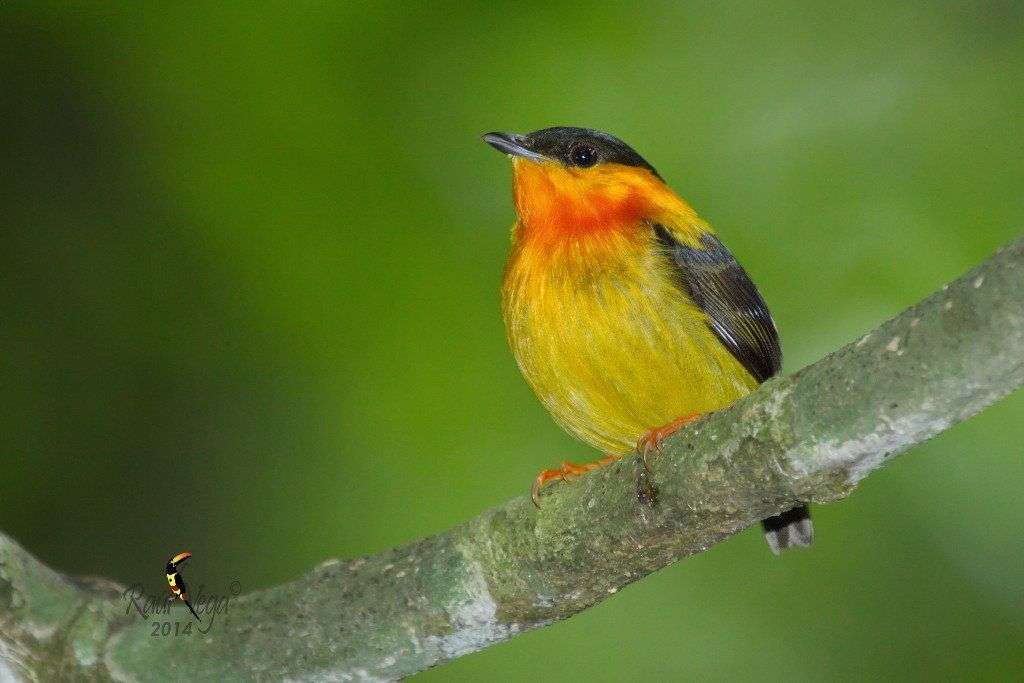These little manakins are a family of Neotropical birds that represents eight species in Costa Rica that
are recognized by their rounded shape. The males have bright colors that often contrast with black. They’re famous for elaborate courtship meetings, also known as leks.
The males attract the females to their party inside the forest with a few rapid movements accompanied by sounds produced by their feathers and vocalizations. In the Alexander Skutch Biological Corridor there are four species. They can be found relatively easily on a walk.
One of them, the red-capped manakin (Ceratopipra mentalis), is known for his dance in the style of Michael Jackson, gliding backwards on a horizontal branch, showing his yellow thighs and the agility of his legs, at the same time producing shrill sounds with the wings.
However, the courtship dances of Orange-collared manakins are very different. The males clean an area of bushes creating a dance floor, where at a high speed they vertically bounce from twig to twig. As they settle down, they collide with their wings generating a hollow sound, like little sticks breaking.
In our valley we also observe the Blue-crowned Manakin. With its very shiny, black plumage and a blue cap, its song is tireless in the forests of the Refugio Los Cusingos. The dance is a series of jumps on horizontal twigs at low altitude in the forest.
The last of the jumping birds of our forest is the White-ruffed manakin (Corapipo alte) that prefers to dance very close to the ground, on rocks or fallen trunks.
Deforestation and collisions with glass are two of its main threats. To avoid these impacts, we recommend putting string curtains in the external area of arge windows. It is also important to create gardens in a sustainable way for them, with abundant native plants that favor their food, such as the tucuico (Ardisia compssa).
By Susana García Blanco






